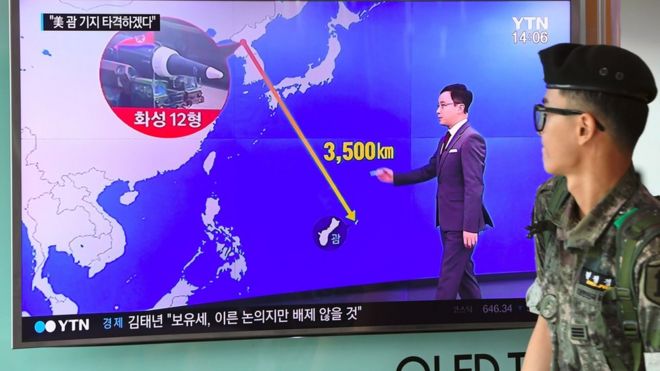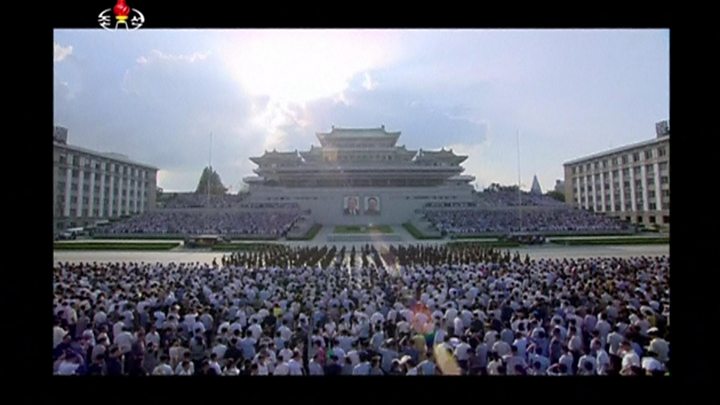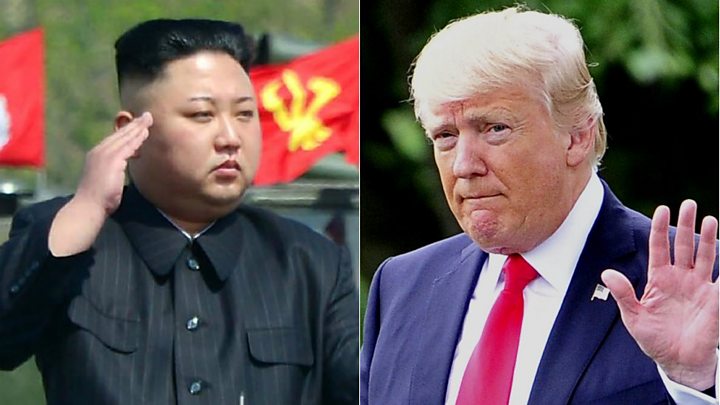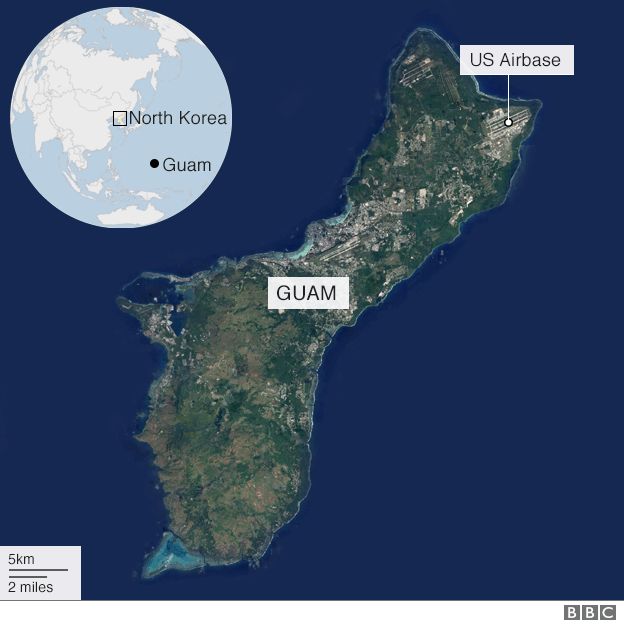 AFP
AFP
North Korea says it will be ready by mid-August to fire four missiles near the US territory of Guam, as a war of words with Washington intensifies.
State media said Hwasong-12 rockets would pass over Japan and land in the sea about 30km (17 miles) from Guam, if the plan was approved by Kim Jong-un.
It denounced Donald Trump's warnings of "fire and fury" and said the US leader was described as "bereft of reason".
The US has warned the North its actions could mean the "end of its regime".
US Defence Secretary Jim Mattis said Pyongyang would be "grossly overmatched" in any war against the US and its allies.
The North first announced on Wednesday that it was drawing up plans for a missile strike against Guam, which is home to US military bases, strategic bombers and about 163,000 people.
A later statement carried by state media said the military would "finally complete the plan" by mid-August and report it to leader Kim Jong-un for his approval.
"The Hwasong-12 rockets to be launched by the KPA [Korean People's Army] will cross the sky above Shimane, Hiroshima and Koichi [Kochi] Prefectures of Japan," state news agency KCNA said, quoting army chief General Kim Rak Gyom.
"They will fly 3,356.7km for 1,065 seconds and hit the waters 30-40km away from Guam."
The Hwasong missiles are North Korea's domestically produced medium and long-range weapons.

Media capti
The statement said President Trump's remarks on Tuesday that the North risked "fire and fury" for threatening the US were "a load of nonsense".
"Sound dialogue is not possible with such a guy bereft of reason and only absolute force can work on him," it added.
Amid escalating rhetoric, Mr Mattis issued a strongly worded statement on Wednesday, calling on Pyongyang to halt its arms programme.
"The DPRK [Democratic People's Republic of Korea] must choose to stop isolating itself and stand down its pursuit of nuclear weapons," he said.
- What damage could N Korea do without nuclear weapons?
- Pyongyang releases Canadian pastor
- N Korea hides anti-US message in cartoon
"While our state department is making every effort to resolve this global threat through diplomatic means, it must be noted that the combined allied militaries now possess the most precise, rehearsed and robust defensive and offensive capabilities on Earth."
Mr Trump boasted about America's atomic arsenal earlier on Wednesday.
Tweeting from New Jersey where he is on holiday, the president said the US nuclear stockpile was "more powerful than ever before".
Meanwhile, US Secretary of State Rex Tillerson has sought to reassure Americans that North Korea does not pose an imminent threat.
Speaking in Guam, where he was making a scheduled visit, he said he was hopeful a global "pressure campaign" involving Russia and China could lead to new dialogue with Pyongyang "about a different future".

capt
Mr Tillerson said the situation had not dramatically changed over the past few days, and that Americans "should sleep well at night".
China has urged calm, describing the situation as "complex and sensitive".
Despite rounds of UN sanctions, Pyongyang carried out two nuclear tests last year and two intercontinental ballistic missile tests in July.
On Tuesday, a media report in the US claimed the North had achieved its goal of making a nuclear warhead small enough to fit inside its missiles.
But this remains unconfirmed, and most analysts doubt the country would launch a suicidal pre-emptive attack on the US.
North Korea remains technically in a state of war with the US and South Korea after the 1950-53 conflict on the peninsula ended in a truce.
The tiny but important island of Guam

- The 541sq km (209 sq miles) volcanic and coral island in the Pacific between the Philippines and Hawaii.
- It is a "non-incorporated" US territory, with a population of about 163,000.
- That means people born in Guam are US citizens, have an elected governor and House Representative, but cannot vote for a president in US national elections.
- US military bases cover about a quarter of the island. About 6,000 personnel are based there and there are plans to move in thousands more.
- It was a key US base in World War Two, and remains a vital staging post for US operations, giving access to potential flashpoints like the South China Sea, the Koreas and the Taiwan Straits.
BBC News
No comments:
Post a Comment